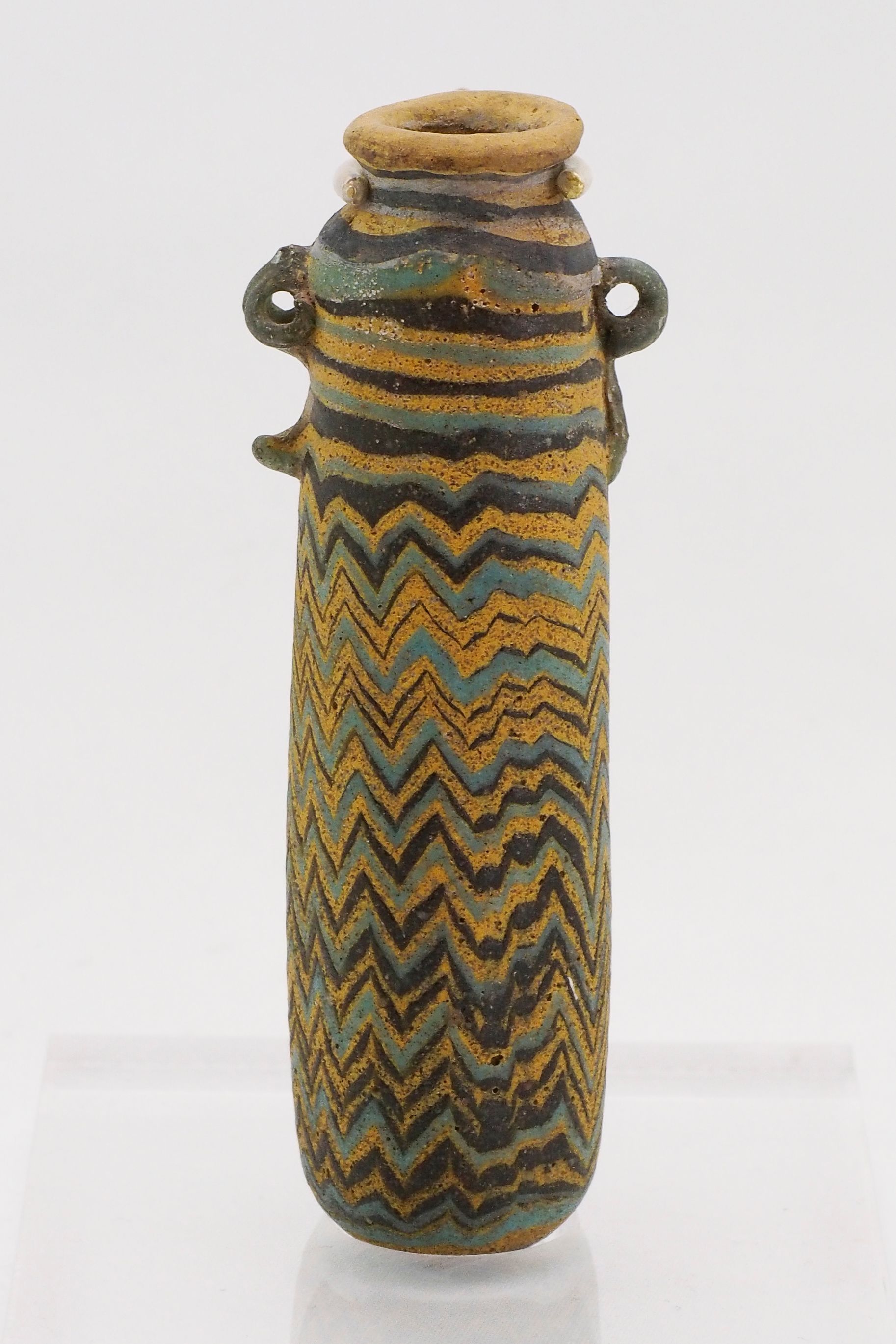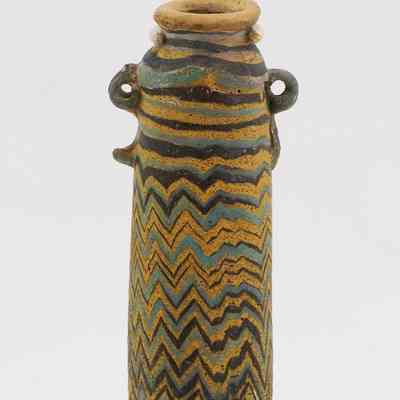Duck-Head Alabastron
Name/Title
"Duck-Head" AlabastronEntry/Object ID
11NE-Mi1-139Description
The rim is rounded, folded outwards. The neck is short and cylindrical which transitions into the rounded shoulders. The designs on the neck and shoulder are concentric rings of white, black, yellow, and turquois marvered threading. Below the shoulder are two "duck head" handles, they are vertical black ringed handles with knobbed tails, mimicking a duck's head. The tubular body, with a base layer of black glass, is decorated with yellow and turquois thread which have been combed into a zig-zag pattern and marvered until smooth. The base is flat and the vessel is intact.Use
Perfume VesselContext
The term "Duck-Head" comes from the shape of the vessel's handles, as the rings look similar a duck's head and the knobbed tails looks similar to a duck's bill. The vessel is also named 'Alabastron' because this shape of vessel was originally made of alabaster before glassmakers adapted the shape to the glass industry. When they were adapted to the glass industry in the ancient Mediterranean, these vessels held scented oils, typically olive-oil based, rather than the Roman alcohol-based perfumes. Created by core-forming, this technique was first developed in the Near East but in the sixth century BCE the industry moved west into to Mediterranean. The Mediterranean vessels are classified into three successive groups, Group I, II, and III; this vessel falls under Group I. Vessels from Group I are disproportionately found in Rhodes, Greece and due to indirect archaeological evidence it was theorized that this technique was brought to the Mediterranean by Mesopotamian craftsmen who emigrated westwards in the seventh century BCE or was adopted by locals of Rhodes. However, recent geochemical analyses of silica raw materials in Rhodian sand and that of the Group I vessels, may indicate that Rhodes was not the primary place of manufacture. Instead, the analyses propose the Levant as the place of primary manufacture - where raw materials were melted to produce raw glass chunks then transported to secondary production centers - with secondary workshops possibly being located in Rhodes where raw glass chunks were re-melted, coloured, and ultimately shaped into vessels (Blomme et al. 2016, 2).Made/Created
Date made
450 BCE - 400 BCETime Period
ClassicalEthnography
Cultural Region
Area
Eastern MediterraneanCulture/Tribe
Aegean/Mediterranean

